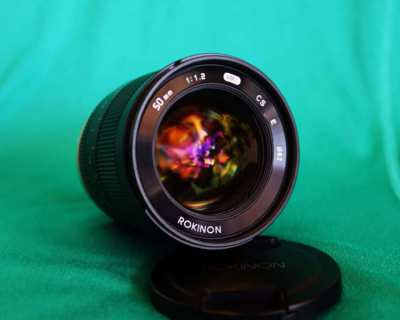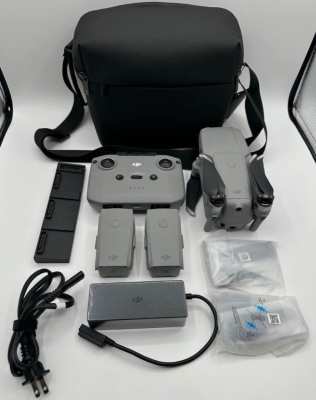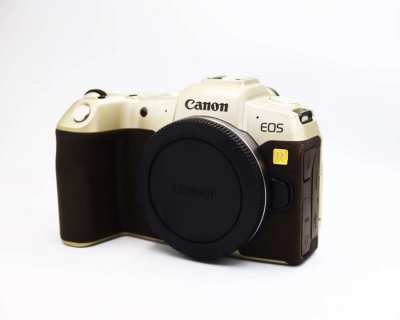Panasonic HC-V110 Full HD Camcorder, 38x Optical/72x Intelligent Zoom
- Pattaya City Central
- 23 Oct 2024 : 10:14 am
- ID: 522367
Ad Description
VIDEO:
Panasonic HC V110 quick test review and footage: https://www.youtube.com/watch?v=V-CAEQIB7Kg
Panasonic HC V110 Test Footage: https://www.youtube.com/watch?v=hfMJ0nxPwIg
NEW CAMERA TEST & Room Tour (Panasonic HC-V110) Normal Voice: https://www.youtube.com/watch?v=tQJYywOpp_8
Excellent condition camera with hand strap, battery, charger, CD, docs, Box.
English / Thai + menu.
S/n: last photo.
User Manual Operating Instructions: https://help.na.panasonic.com/wp-content/uploads/2023/02/HCV110_V201_V210_VQT4T63_ENG-2.pdf
The Panasonic HC-V110 Full HD Camcorder enables ultra-telephoto Intelligent 72x zoom shooting with a compact body. This powerful zoom brings faraway subjects right up close to capture dynamic images that fill the entire frame. The BSI Sensor has improved high sensitivity performance to record easy-to-see, clear images even in dimly lit situations. The Image Stabilizer corrects slight hand-shake. Even high-power zoom shots, which are highly susceptible to hand-shake, now come out sharp and clear.
Panasonic HC-V110 Overview
The Panasonic HC-V110 HD Camcorder features a 1/5.8" BSI MOS sensor for recording Full HD 1080/60i video. The lens has a maximum aperture of f/1.8 for excellent low light capabilities, and the 38x optical zoom is supplemented by a 72x Intelligent Zoom. In addition to HD video, the HC-V110 can capture 8.9MP still photographs. Other features include a 2.7" LCD monitor, an SD/SDHC/SDXC memory card slot and an image stabilizer for sharp, handheld shots.
BSI Sensor
The BSI Sensor has improved high sensitivity performance to record easy-to-see, clear images even in dimly lit situations.
Intelligent 72x Zoom
The HC-V110 features an ultra-telephoto Intelligent 72x zoom. This powerful zoom brings faraway subjects right up close to capture dynamic images that fill the entire frame.
Image Stabilizer
The Image Stabilizer corrects slight hand-shake. Even high-power zoom shots, which are highly susceptible to hand-shake, now come out sharp and clear.
iA and Scene Modes
iA (Intelligent Auto) senses the shooting conditions and automatically adjusts settings for optimal results. iA makes the bothersome settings for you and makes it easy to capture beautiful, well-focused images. Scene modes include Sports, Portrait, Low Light (motion image only), Spot Light, Snow, Beach, Sunset, Fireworks, Scenery, Night Scenery, Night Portrait (still image only), and Soft Skin Mode.
Eye-Fi Compatible
The HC-V110 is compatible with Eye-Fi memory cards (sold separately), which allow you to wirelessly transfer recorded content to a PC or upload it to social networking sites. You can also directly transport the data to your smartphone, tablet or other compatible devices without connecting another access point.
Pre-Rec Function
This smart function records three seconds of video even before you actually begin shooting. Before recording begins, the images are held in temporary, internal memory. This helps ensure that you won't miss the start of a moment you want to record, such as when an event begins all of a sudden.
Focus Assist
This function shows which subjects are in-focus by displaying their outlines in blue. You can easily check the focus on the LCD monitor when manually focusing, to ensure sharp images.
Color Night Rec
Color Night Rec captures images with color even in dim lighting (1 lux).
HD Writer
HD Writer software, included with the camcorder, makes it easy to play or edit videos on your PC and have more fun when the shooting's done. The Short Movie Story function makes it possible to transform still images and videos into dramatic short videos. Once the still images/videos, a theme, and background music are selected, the software takes over to automatically produce the movie. It's easy to add titles, rearrange scenes, provide transition effects, and edit images in single frame units.
Panasonic HC V110 quick test review and footage: https://www.youtube.com/watch?v=V-CAEQIB7Kg
Panasonic HC V110 Test Footage: https://www.youtube.com/watch?v=hfMJ0nxPwIg
NEW CAMERA TEST & Room Tour (Panasonic HC-V110) Normal Voice: https://www.youtube.com/watch?v=tQJYywOpp_8
Excellent condition camera with hand strap, battery, charger, CD, docs, Box.
English / Thai + menu.
S/n: last photo.
User Manual Operating Instructions: https://help.na.panasonic.com/wp-content/uploads/2023/02/HCV110_V201_V210_VQT4T63_ENG-2.pdf
The Panasonic HC-V110 Full HD Camcorder enables ultra-telephoto Intelligent 72x zoom shooting with a compact body. This powerful zoom brings faraway subjects right up close to capture dynamic images that fill the entire frame. The BSI Sensor has improved high sensitivity performance to record easy-to-see, clear images even in dimly lit situations. The Image Stabilizer corrects slight hand-shake. Even high-power zoom shots, which are highly susceptible to hand-shake, now come out sharp and clear.
Panasonic HC-V110 Overview
The Panasonic HC-V110 HD Camcorder features a 1/5.8" BSI MOS sensor for recording Full HD 1080/60i video. The lens has a maximum aperture of f/1.8 for excellent low light capabilities, and the 38x optical zoom is supplemented by a 72x Intelligent Zoom. In addition to HD video, the HC-V110 can capture 8.9MP still photographs. Other features include a 2.7" LCD monitor, an SD/SDHC/SDXC memory card slot and an image stabilizer for sharp, handheld shots.
BSI Sensor
The BSI Sensor has improved high sensitivity performance to record easy-to-see, clear images even in dimly lit situations.
Intelligent 72x Zoom
The HC-V110 features an ultra-telephoto Intelligent 72x zoom. This powerful zoom brings faraway subjects right up close to capture dynamic images that fill the entire frame.
Image Stabilizer
The Image Stabilizer corrects slight hand-shake. Even high-power zoom shots, which are highly susceptible to hand-shake, now come out sharp and clear.
iA and Scene Modes
iA (Intelligent Auto) senses the shooting conditions and automatically adjusts settings for optimal results. iA makes the bothersome settings for you and makes it easy to capture beautiful, well-focused images. Scene modes include Sports, Portrait, Low Light (motion image only), Spot Light, Snow, Beach, Sunset, Fireworks, Scenery, Night Scenery, Night Portrait (still image only), and Soft Skin Mode.
Eye-Fi Compatible
The HC-V110 is compatible with Eye-Fi memory cards (sold separately), which allow you to wirelessly transfer recorded content to a PC or upload it to social networking sites. You can also directly transport the data to your smartphone, tablet or other compatible devices without connecting another access point.
Pre-Rec Function
This smart function records three seconds of video even before you actually begin shooting. Before recording begins, the images are held in temporary, internal memory. This helps ensure that you won't miss the start of a moment you want to record, such as when an event begins all of a sudden.
Focus Assist
This function shows which subjects are in-focus by displaying their outlines in blue. You can easily check the focus on the LCD monitor when manually focusing, to ensure sharp images.
Color Night Rec
Color Night Rec captures images with color even in dim lighting (1 lux).
HD Writer
HD Writer software, included with the camcorder, makes it easy to play or edit videos on your PC and have more fun when the shooting's done. The Short Movie Story function makes it possible to transform still images and videos into dramatic short videos. Once the still images/videos, a theme, and background music are selected, the software takes over to automatically produce the movie. It's easy to add titles, rearrange scenes, provide transition effects, and edit images in single frame units.
















